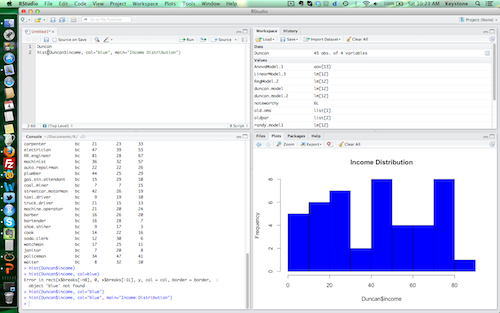Basic Data Analysis through R/R Studio. In this tutorial, I 'll design a basic data analysis program in R using R Studio by utilizing the features of R Studio to create some visual representation of that data. Following steps will be performed to achieve our goal. Downloading/importing data in R. Transforming Data / Running queries on data. Room Size: 56’ (W) x 41’ (D) in vertical layout. 41’ (D) x 56’ (W) in horizontal layout. Stage Size: Flat Floor – No Fixed Stage. Ceiling Height: 16’. Capacity: 87 persons maximum standing room / 70 persons maximum seated. Power: (9) 20 amp circuits, 150 amp 3 phase tie-in available. Stage Lighting: (12) Par 56 500w fixtures on a.
Introduction

Leaflet is one of the most popular open-source JavaScript libraries for interactive maps. It’s used by websites ranging from The New York Times and The Washington Post to GitHub and Flickr, as well as GIS specialists like OpenStreetMap, Mapbox, and CartoDB.
This R package makes it easy to integrate and control Leaflet maps in R. F150 nascar edition wheels.
Features
- Interactive panning/zooming
- Compose maps using arbitrary combinations of:
- Map tiles
- Markers
- Polygons
- Lines
- Popups
- GeoJSON
- Create maps right from the R console or RStudio
- Embed maps in knitr/R Markdown documents and Shiny apps
- Easily render spatial objects from the
sporsfpackages, or data frames with latitude/longitude columns - Use map bounds and mouse events to drive Shiny logic
- Display maps in non spherical mercator projections
- Augment map features using chosen plugins from leaflet plugins repository
R Studio Software Download For Windows
Installation
To install this R package, run this command at your R prompt:
Once installed, you can use this package at the R console, within R Markdown documents, and within Shiny applications.
Basic Usage
How to change morph mod controls. You create a Leaflet map with these basic steps:
- Create a map widget by calling
leaflet(). - Add layers (i.e., features) to the map by using layer functions (e.g.
addTiles,addMarkers,addPolygons) to modify the map widget. - Repeat step 2 as desired.
- Print the map widget to display it.
Here’s a basic example:
In case you’re not familiar with the magrittr pipe operator (%>%), here is the equivalent without using pipes:
Next Steps
We highly recommend that you proceed to The Map Widget page before exploring the rest of this site, as it describes common idioms we’ll use throughout the examples on the other pages.
Rstudio Shortcuts
Although we have tried to provide an R-like interface to Leaflet, you may want to check out the API documentation of Leaflet occasionally when the meanings of certain parameters are not clear to you.